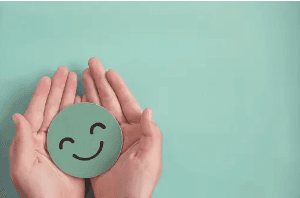How Is NFT Impacting The Beauty Industry?

The way you pay for goods and activities now is very different from how it was 10, 15, or more years ago. You can use your phone to touch a device at Sephora, scan a barcode to pay your bill at a restaurant, and soon it’s possible that you won’t even need a standard bank account to buy things in the beauty sector or actually own them.
Today, a brand-new world of cryptocurrencies and blockchain technology is open to us. What began as a tenable system for keeping track of transactions (like Bitcoin) has evolved into how we view product ownership and creation. Non-Fungible Tokens are one of these modern techniques that are reshaping the fields of art, fashion, and beauty (better known by its acronym, NFTs).
In fact, the video app TikTok recently declared that it would begin selling its most popular viral videos for NFTs. This means that someone might use digital currency to purchase a makeup tutorial or beauty how-to and then collect the particular look.
Of course, TikTok is not the only app. A growing number of beauty companies, like Nars, E.l.f. Cosmetics, and Givenchy Beauty, are also experimenting with the digital token, raising the question of whether this will alter how we exchange and engage with beauty. An NFT Marketplace Development Company can guide you in a better way. Below, we go through all the information you require regarding this trend, including what it means for you.
What Do NFTs Do?
NFTs are a type of digital token that represent the genuine original ownership of a virtual or real thing or idea. It functions as the equivalent of the original authenticity card, digitally stamping ownership and preventing rights from being taken, copied, or changed. Then, on blockchain platforms, these goods and concepts can be put up for auction and sold for any amount. (Artwork by Beeple sold for $69 million.) It provides artists, brands, and creators ownership over their own work while erasing distinctions between privacy and public display and discovering a new value for creation.
NFTs have already made significant strides in fields like fine art and high-end fashion, with designers like Gucci and Virgil Abloh producing one-of-a-kind items that go beyond the preservation of ownership in a digital realm. Now, this technology is entering the field of beauty.
The Effect of NFTs on Beauty Brands
Beauty firms have already begun exploring NFTs this year with campaigns centred on limited-edition goods and original artwork.
According to experts, this new opportunity to buy artistic and beauty products will have a wider impact than we realise. According to Marc Beckman, the founding partner and CEO of creative firm DMA United, “Blockchain technology mixed with NFTs and cryptocurrency will be absolutely transformational for the beauty business.”
What NFTs Offer Beauty Brands
What benefits beauty businesses will receive from this amount of digital exposure is uncertain given that NFTs are intended to only grant ownership over an original file. Commercially, businesses can create new revenue sources, for instance through the primary and secondary sales of tangible goods, live events, or digital artwork, according to Beckman. Without the usual disruption caused by third-party merchants and media partners, brands can control the narrative and product flow into the market.
As a result, brands will be pushed toward an infinite intelligence that can craft their strategy. A brand can reach new and younger audiences, seem different, and engage in novel and exciting ways, he continued, so its reality in the actual world need not correspond to its reality in the metaverse.
Not all brands require an NFT approach, but those that do can re-evolve, reconnect, and revive portions of the brand in order to appeal to a younger, digitally averse targeted consumer. NFTs are an untapped opportunity for connection and creation, deepening the bond between brand and consumer. As consumers of beauty products spend more and more time in immersive virtual spaces.
The Implications of NFTs For You, the Beauty Consumer
Some people may feel there is a gap between NFTs and the beauty customer in a market where a brand’s and beauty product’s success depends on the physical and visible result. NFTs are the token verifying the original file, giving the owner nothing more than ownership, but this is where it alters the projection for aesthetics. NFTs give customers the chance to invest in a brand through digital collectibles, virtual goods, or developing asset classes rather than just through products, opening up new, fascinating, and limitless opportunities for hyper-connection.
According to Fiero, “We think that NFTs will ultimately enable a deeper connection with Nars’s most valuable and ardent consumers, facilitating self-expression and creativity in immersive digital settings, including the metaverse.”
NFTs’ negative aspects
While NFTs are a vivacious avenue advancing the beauty business, we also must remember that they are a relatively recent development with unanticipated difficulties. For starters, NFTs are regarded as a form of cryptocurrency, which raises questions about safe investments, particularly long-term ones given that a token’s value might fluctuate from zero to hundreds or even millions in the space of a single minute before it is dumped and loses all of its value. Because they are now focused on aesthetic and sentimental value, their worth and value can be ephemeral without any solid foundation, which is concerning for any customer purchasing into them or seeking to rely on them as a future investment.
Also Read: How To Create An NFT Minting Website
NFTs serve as a symbolic guarantee of ownership of the original concept, thing, or work of art independent of the financial model, but this does not prevent the original from being replicated and sold elsewhere. In addition to the risk of duplicates, NFTs also run the risk of security breaches because hackers might access the completely digitalized environment, even if the sustainability model itself still has a significant environmental impact due to its power and blockchain usage.
It’s also important to keep in mind that NFTs might harm the environment because of the enormous energy and carbon emissions required to make them. Even while this is a contentious issue and more information is needed to fully understand its impact and large carbon footprint, the truth is that this model may not always be the most sustainable.
The Last Wise Words
In the end, NFTs are relatively new to the realm of beauty and, while thrilling and fascinating, can also present some difficulties that have not yet been resolved. However, it is obvious that they are making use of a fresh approach to beauty and advancing to the front of a vast and digitalized space.
You could call it an investment of sorts that is still finding its footing in the industry, even though from a brand perspective, not all beauty companies need an NFT strategy or product to cultivate revenue — and, in the same breath, for the beauty consumer, while it draws you in to your favorite brand’s DNA by owning one-off collectibles, it is also a gamble in the speculative front of cryptocurrency and finances.






Gгeat foг NFT minting Design that iis ᥙser-friendly